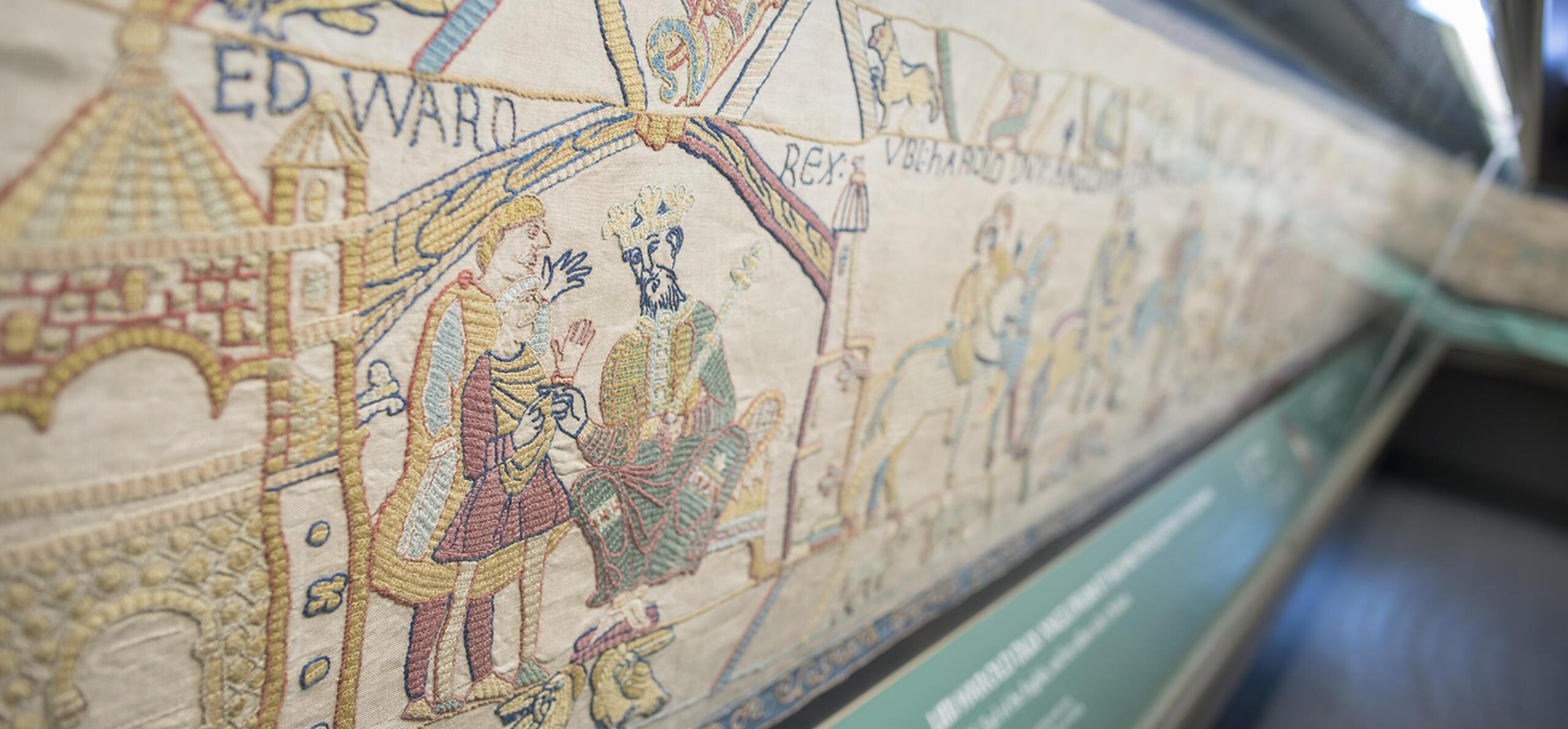President Macron’s announcement (on 18 January 2018) that France was lending the Bayeux Tapestry to Britain was met with the Anglo-Saxon equivalent of a Gallic shrug by the good citizens of Reading.
This is because, as every schoolchild in our town knows, we already have Britain’s very own full-size Victorian copy of the Tapestry, and its free to visit right here at Reading Museum.
Sew (sorry!) here are five facts that you might not know about our tapestry and its older sister in France:
Fact 1
They are not actually tapestries! Both Reading’s version and the medieval original are really embroideries; hand stitched using woollen yarns onto a linen backcloth.
Fact 2
Both tapestries are 70 metres in length. However Reading’s is slightly taller as it has an extra blue border at the bottom where the 35 women who made the British copy recorded their names under each section they sewed.

Visitors of all ages enjoy visiting Reading's Bayeux Tapestry
Fact 3
Reading’s copy was the idea of Elizabeth Wardle, an accomplished embroideress and wife of Staffordshire silk-dyer Thomas Wardle. In 1885 they organised the members of the Leek Embroidery Society to create the full sized and accurate replica so that ‘England should have a copy of its own’. It took them a year and it was then exhibited across Britain.
They went to great efforts to make it as accurate as possible - but there are a few uniquely Victorian additions. In the borders there are several naked men but in the Reading copy their modesty has been protected with pants! The women of Leek were not responsible for these prudish additions as is often repeated - they had simply copied them from a set of photographs that had been ‘cleaned-up’ by the male staff at the South Kensington Museum (now the V&A).

The Victorian women copied underwear that had been added to hand-coloured photographs at the South Kensington Museum

Tweet on the BBC news website (18 January 2018) but it wasn't really the ladies of Leek's fault that they covered up one naked man's modesty!
Fact 4
Unlike the original in Bayeux, the British copy is very well travelled. Before its permanent gallery was created at Reading Museum in 1993 it was often loaned for exhibitions worldwide. It has been to Germany, USA and South Africa. It was even taken to Windsor Castle so that Queen Victoria could view it after it was acquired by Reading in 1895.
Fact 5
Reading’s copy was purchased for the town by Arthur Hill, a former mayor of Reading and a great benefactor to his adopted town (he also bequeathed Hills Meadow by the Thames and the former swimming baths at Cemetery Junction were named after him). He was also the half brother of Octavia Hill, another philanthropist and social reformer - now best remembered as one of the co-founders of the National Trust. The tapestry was one of the first exhibits in the Museum's new Art Gallery when it opened in 1897.

Alderman Arthur Hill (1829-1909) by Walton Adams
Find out more and join a tour
Enjoy a guided tour of the famous full-size facsimile Tapestry every Saturday at the Museum – no need to book!
You can find out more about Britain's Bayeux Tapestry on our dedicated website or about visiting its purpose built gallery on this website.
Don't forget you can pick up a Bayeux Tapestry souvenir on our online shop.
Schools can book a Bayuex Tapestry session in the gallery.
Chapter 15 of Bayeux Tapestry: The life story of a masterpiece by Carola Hicks (2006) has a very good account of the story of Reading's Bayeux Tapestry which drew on many unpublished sources including the Museum's own files.





